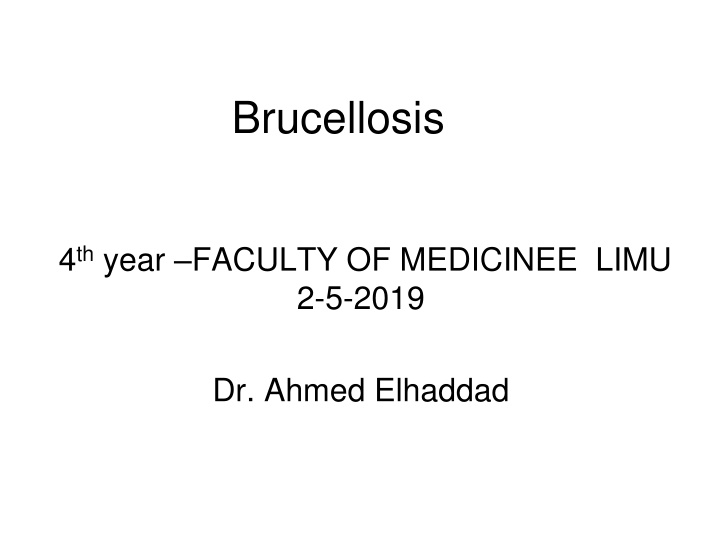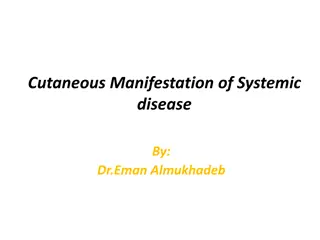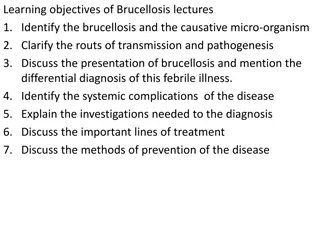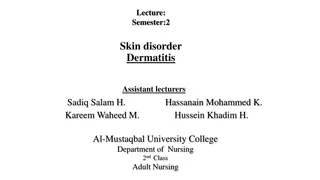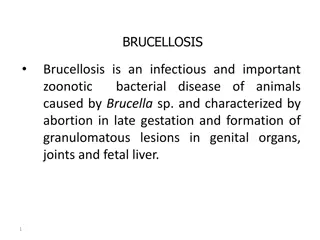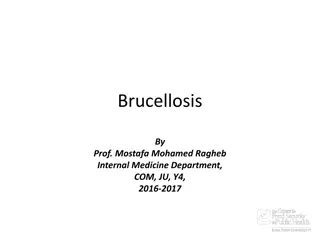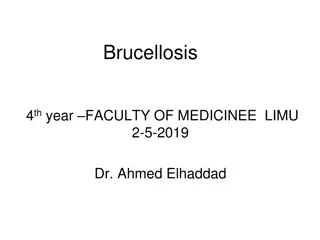Overview of Brucellosis: Causes, Transmission, and Clinical Manifestations
Brucellosis is a zoonotic infection caused by the genus Brucella, with various symptoms and modes of transmission. Learn about its microbiology, pathogenesis, and physical findings.
Download Presentation

Please find below an Image/Link to download the presentation.
The content on the website is provided AS IS for your information and personal use only. It may not be sold, licensed, or shared on other websites without obtaining consent from the author.If you encounter any issues during the download, it is possible that the publisher has removed the file from their server.
You are allowed to download the files provided on this website for personal or commercial use, subject to the condition that they are used lawfully. All files are the property of their respective owners.
The content on the website is provided AS IS for your information and personal use only. It may not be sold, licensed, or shared on other websites without obtaining consent from the author.
E N D
Presentation Transcript
Brucellosis 4thyear FACULTY OF MEDICINEE LIMU 2-5-2019 Dr. Ahmed Elhaddad
Brucellosis The genus Brucella causes the zoonotic infection named brucellosis (also known as undulant fever, Malta fever, Gibraltar fever, and Mediterranean fever) . The disease exists worldwide ,with the highest prevalence in the Mediterranean countries, Asia, Africa and Central and South America. Worldwide it remains a significant cause of disease in domesticated animals and humans as an incidental host.
Microbiology Organisms of the genus Brucellae are small, gram negative, aerobic coccobacilli that lack a capsule, flagella, endospores, or native plasmids. The species causing disease in human are Abortus, Suis, Melitensis Canis all are the predominant cause of disease in Humans and animals.
Transmission Brucellosis is transmitted to humans by direct contact with ; Infected animals, by ingestion of unpasteurized milk or milk products Through cuts and abrasions or by inhalation of aerosols. Person person transmission is extremely rare
Pathogenesis Skin abrasion, conjunctivae, inhalation or ingestion Engulfed by neutrophils and monocytes (resistant to killing) Localize regional lymph nodes Infect phagocytic cells in the RE system and form granulomas 5
Clinical manifestations The incubation period for human brucellosis is variable, ranging from a few days to a few months. Brucellosis is a well-documented cause of fever of unknown origin with varied and nonspecific symptoms. In addition to fever, other prominent symptoms include sweats, malaise, anorexia, arthralgias, fatigue, weight loss, and depression which are non specific .
Physical findings, when present, are usually limited to minimal lymphadenopathy and occasionally hepatosplenomegally Virtually any organ system can be involved with brucellosis and localization of the process may cause focal symptoms or findings. 32 percent developed a focal complication. Duration of symptoms for more than 30 days before diagnosis was the major risk factor for developing focal disease.
Diagnosis The diagnosis of brucellosis should be considered in an individual with otherwise Unexplained chronic fever and nonspecific complaints. Such patients should be questioned for possible sources of exposure to Brucella including contact with animal tissues or ingestion of unpasteurized milk or cheese. The differential diagnosis varies, depending upon the presence or absence of focal features .
Routine laboratory studies are nonspecific. White blood cell counts are usually normal to low (pancytopenia can occur) and minor disturbances in hepatic enzymes are relatively common. Studies such as radiographs, bone scans, computerized tomography, magnetic resonance imaging, and echocardiography may be helpful in isolating or delineating focal disease, but do not provide a definitive diagnosis .
Cultures Both cultures and serologic tests can be used to establish the diagnosis of brucellosis. Ideally, the diagnosis is made by isolation of the organism from cultures of blood or other sites, especially bone marrow or liver biopsy specimens. However, cultures are not always positive. blood cultures were positive in only 80 percent of initial infections.
In addition to blood, a variety of other specimens may provide positive cultures. These include liver biopsies, aspiration or biopsy of areas of localized disease, especially bone marrow, pleural fluid or tissue, and occasionally cerebrospinal fluid.
Serologic test Most serological studies for diagnosis of Brucellosis are based upon the detection of antibody. These include: Serum agglutination (standard tube agglutination) Complement fixation Rose Bengal agglutination Antibrucella Coombs ELISA (enzyme-linked immunosorbent assay)
Tube agglutination testing. It is generally agreed that a single titer of >1:160 in the presence of a compatible illness supports the diagnosis. Demonstration of a fourfold or greater increase or decrease in agglutinating antibodies over four to 12 weeks provides even stronger evidence for the diagnosis .
ELISA is more sensitive and specific than agglutination test Polymerase chain reaction. A test using the polymerase chain reaction (PCR) shows promise for the detection and rapid diagnosis of Brucella spp in human blood specimens. Its clinical role remains to be defined.
Treatment Several regimens have been used to treat brucellosis . None is 100 percent effective since about 10 percent of patients relapse after therapy. Most relapses occur within three months of stopping therapy and almost all within six months.
Regimen A Doxycycline 100 mg PO twice daily for six weeks plus streptomycin 1 gram IM daily for the first 14 to 21 days. Regimen B Doxycycline 100 mg PO twice daily plus Rifampicin 600 to 900 mg PO (15 mg/kg) once daily for six weeks. Regimen C--- Doxycycline 100 mg PO twice daily for six weeks plus gentamicine 1omg/Kg 8 h for 7 days.
Pregnancy Treatment of brucellosis during pregnancy poses a difficult problem. In contrast to certain animal species, brucella does not seem to cause abortions in humans, although sepsis may cause premature labor and fetal wastage . Two regimens have been suggested for the therapy of brucellosis in pregnancy.
Rifampicin 900 mg once daily for six weeks or Rifampicin 900 mg once daily plus trimethoprim-sulfamethoxazole (5 mg/kg of the trimethoprim component twice daily) for four weeks .
Prevention Prevention of brucellosis is largely through vaccination of domesticated herds and flocks, and serologic testing and slaughter of infected animals. Pasteurization of milk is also very important for the prevention of transmission to humans. Brucella vaccine for human use is not currently available.
